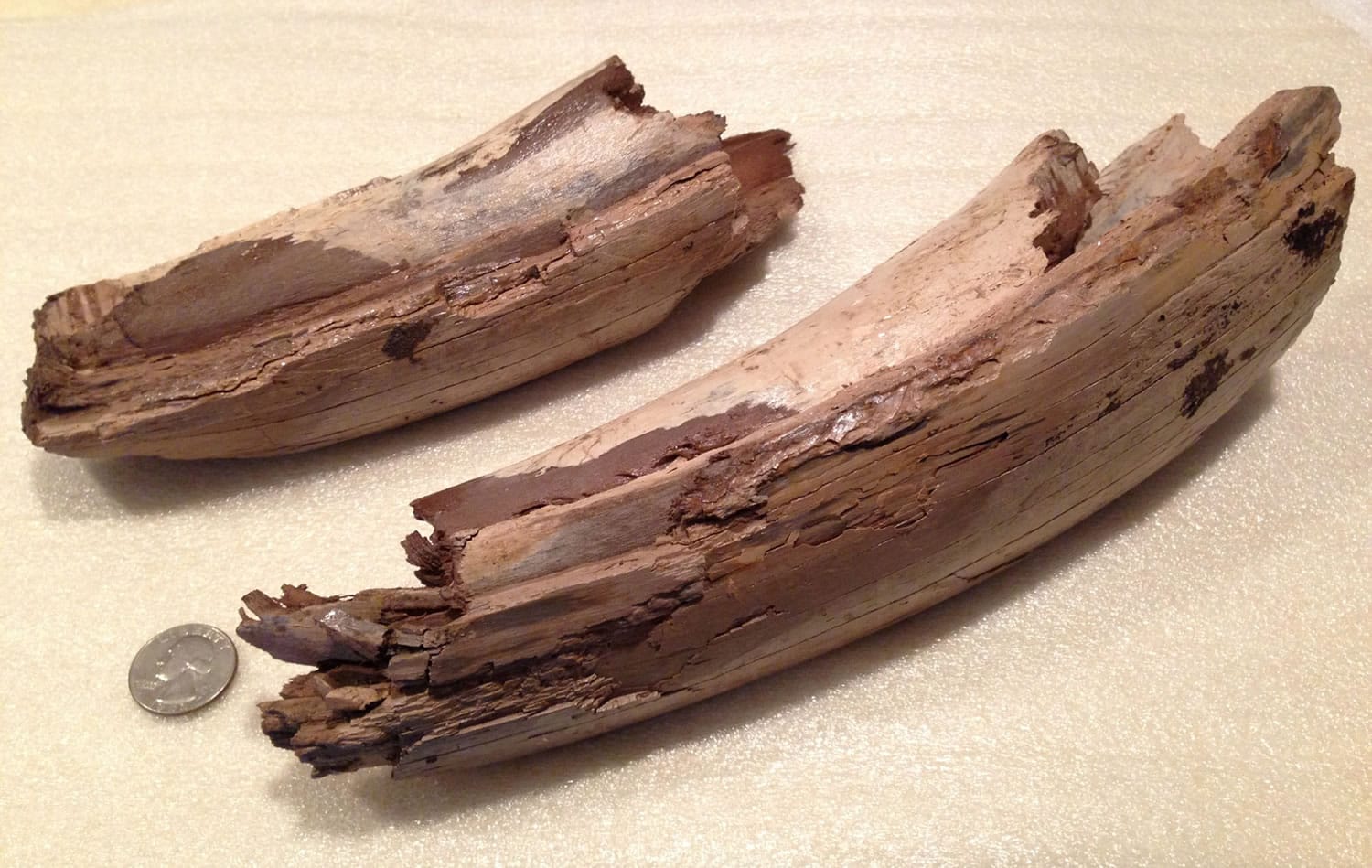It had waited almost 20,000 years to see the light of day.
Three years later, the prehistoric tusk fragment unearthed at a construction site in Ridgefield is still waiting to make its public debut. But the remarkable find could make a return trip to Clark County soon.
“It’s probably just about ready,” said Roger Kiers, an archaeologist with the Washington State Department of Transportation.
The ancient tusk, which belonged to either a mammoth or mastodon, has undergone preservation treatment since it was discovered by a WSDOT inspector at a construction site in Ridgefield in January 2010. It spent much of that time soaking in an acrylic sealant while stored in Kiers’ garage in Olympia. The idea was to give the tusk enough stability so that it doesn’t continue to degrade once it reaches its eventual home.
“We’re just waiting for the acrylic to soak in and harden so that it doesn’t keep decomposing,” said Scott Williams, manager of WSDOT’s cultural resources program.
That treatment is now largely complete. Transportation officials haven’t decided exactly what will happen to the tusk next. Kiers said he’d like to see it displayed in Clark County, perhaps at WSDOT’s regional headquarters in Vancouver or a local museum. The University of Washington’s Burke Museum of Natural History and Culture in Seattle could be another possible candidate, he said.
The tusk was first found in pieces about 30 feet underground. Crews were drilling a shaft for what would become a new interchange at Interstate 5 and state Highway 501. Local leaders held a ribbon-cutting ceremony celebrating the new junction last month.
Shortly after it was found, the tusk was whisked away for research and analysis. That included a stop at the Burke Museum. The find was dated to about 19,000 years old, Kiers said, but it’s unclear whether it was a mammoth or a mastodon.
It’s also difficult to say how the animal came to its final resting place, Kiers said. Fine soil around the tusk fragments suggested the bones may have been carried there during the early stages of the Missoula Floods, which shaped much of the region’s geology thousands of years ago, he said.
Part of the challenge in sorting out that history stems from the way the tusk was found. Kiers credited WSDOT crews for recovering what they did, but not before the tusk was crunched by large equipment that wasn’t so gentle.
“The construction work did a pretty good job of damaging it in the first place,” Kiers said. “It was pretty well busted up.”
The fragments initially ended up in a dirt pile. Most workers didn’t give them a second look, figuring they were pieces of wood. But thanks to the keen eye of an inspector, Kiers traveled down to sift through the site with others to recover as much of the tusk as possible.
Officials initially transported the tusk wrapped in wet towels to keep it moist, Kiers said. The department knew it had extremely delicate cargo on its hands.
“One of the tricks is keeping it moist and then drying it out slowly to keep it from cracking,” Kiers said. “Typically these things can disintegrate pretty quickly.”
Once in the treatment solution, Kiers said the liquid was changed periodically to keep it clean. The tusk is now out of the solution and dried out, he said. When assembled, the fragment is about 3 feet long.
The department will likely call around to inquire about possible display locations for the tusk, Kiers said. For now, it waits in his garage.
Eric Florip: 360-735-4541; http://twitter.com/col_enviro; eric.florip@columbian.com




